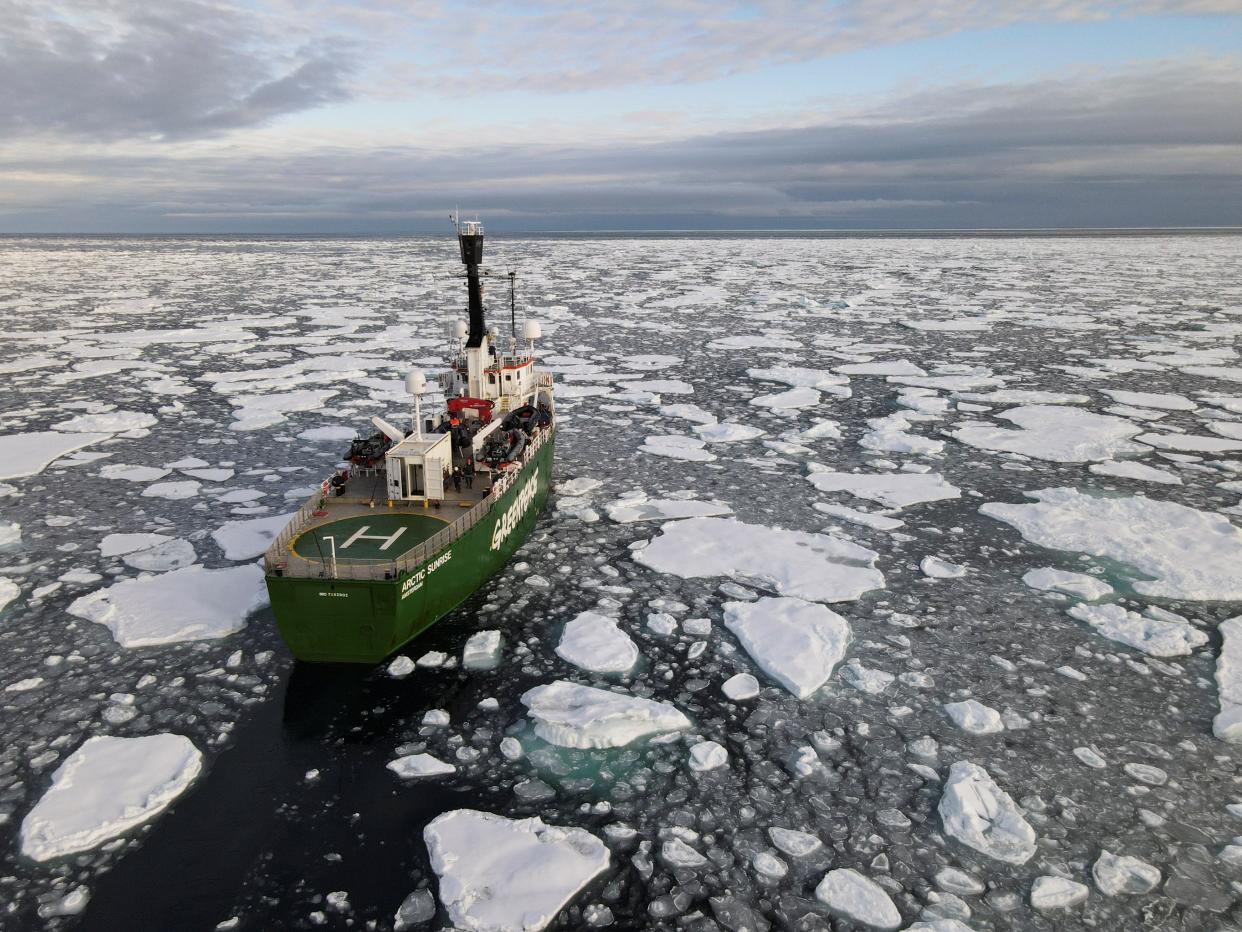Melting Arctic ice caps bolstering China’s military, warns UK navy chief

The melting of the Arctic ice cap is opening up a fast new sea passage in the ‘High North’ for the rapidly expanding Chinese Navy to get into the Atlantic in a fresh challenge to Britain the West, the chief of the Royal Navy has warned.
The shift in the ecological balance is also likely to be exploited by Russia to assert itself even more in waters which are of vital strategic importance to Europe and America, said Admiral Tony Radakin.
“Climate change is a concern for us all but it is opening up maritime trade routes across the top of the world, halving the transit time between Europe and Asia. And we sit on the gateway to these routes”, commented the First Sea Lord.
Speaking aboard the news aircraft carrier HMS Prince of Wales, in Portsmouth, he stated: “when China sails its growing Navy into the Atlantic, which way will it come – the long route or the short route. And these routes skirt the coast of that resurgent Russia. A Russia that is now more active in the Atlantic – our back yard – than it has ever done for over 30 years.”
Admiral Radakin continued: “as the ‘High North’ becomes more open and accessible it’s going to be more contested and competitive as well.. We are already doing much more in the High North, we’ve been operating with our Norwegian friends, with our American friends and in the Barents Sea.
“That’s one of a series of operations. We will be looking in the ‘High North” to join with our partners. Our taking stock will involve looking at the capabilities, it will also involve us working and looking at what do our partners offer us - the Norwegians, the Americans, the Canadians, other nations across the world who have got that specific interest in the High North.”
The Northern Sea Route is currently navigable between August and October, but that window is expected to expand steadily. The Bureau for Economic Policy Analysis in the Netherlands envisaged that it might be ice free by 2030, while the Copenhagen Business School projected 2040 as the time when large-scale shipping would become viable. Beijing has applied to join Arctic Council. It is an organisation set up by countries bordering region bit China has designated itself a “near-Arctic” state despite being more than 800 nautical regions from the North Pole, and, having lobbied hard for membership, has managed to obtain observer status.
China’s official policy had been that its activities in the Arctic are concentrated on scientific exploration, trade and development. But its research stations in region now include satellite systems capable of tracking missiles and intercepting military communications.

The Danish Defence Intelligence Service pointed out last year that the Chinese Army, which had been increasingly using scientific research to establish a presence, has acknowledged that some activities serve a “dual purpose”. A US Department of Defence report to Congress earlier this year claimed “China could use its civilian research presence in the Arctic to strengthen its military presence, including by deploying submarines to the region as a deterrent against attacks.”
Admiral James Stavridis, a former head of Nato military, has pointed out that “the Chinese are building nuclear-powered icebreakers, something the US has not even contemplated. At more than 30,000 tons, the Chinese ships will outpace any other nation’s capability with the exception of Russia and will join a fleet of six conventionally powered ships.”
While Admiral Radakin warned of the Chinese military’s incursion in the ‘ High North’, there has been increasing tension on the other side of the world, in the Indo-Pacific region, with Beijing claiming ownership of 90 per cent of the South China Sea – a claim strongly rejected by neighbouring states and the West. Two US carrier groups, led by USS Ronald Reagan and USS Nimitz, carried out exercises in the South China Sea last July with Beijing accusing Washington of “provocation”.
Earlier this week the ‘Quadrilateral’ group of states – US, Japan, Australia and India – met in Tokyo and stressed the need to uphold freedom of navigation in the disputed waters. Last November Admiral Radakin signed the ‘Trilateral Agreement’ with US Navy Admiral Mike Gilday and Admiral Hiroshi Yamamura of the Japan Maritime Self-Defence Force, on cooperation on a range of issues in the Indo-Pacific including access to waterways under international law.
The meeting was aboard Britain’s second new aircraft carrier HMS Queen Elizabeth which is due to embark on its first mission in May next year. “HMS Queen Elizabeth will sail from this dockyard, at the heart of a multinational Carrier Strike Task Group, with 40 aircraft. The floating embodiment of Global Britain....” said Admiral Radakin on board the Prince of Wales.
The government has refused to say where the Queen Elizabeth is heading, but there is widespread expectation that it will be to Indo-Pacific. Senior Chinese officials have warned that sending British and the US warships into disputed waters would be considered “hostile action” with serious consequences, and urged that London not get sucked into carrying out “dirty jobs” for Washington. All the indications are that the already fraught relations between China and Britain and the West are likely to get even more tense as a military dimension is added from the ‘High North’ to the South China Sea.
Read more

